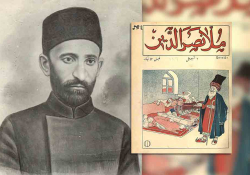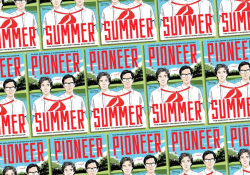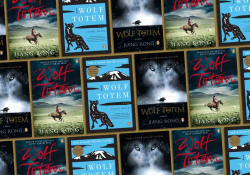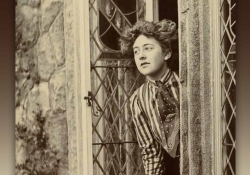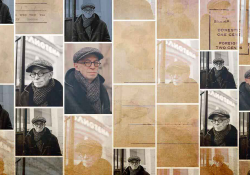Revelation through Restraint in Naja Marie Aidt’s Writing: A Conversation with Denise Newman
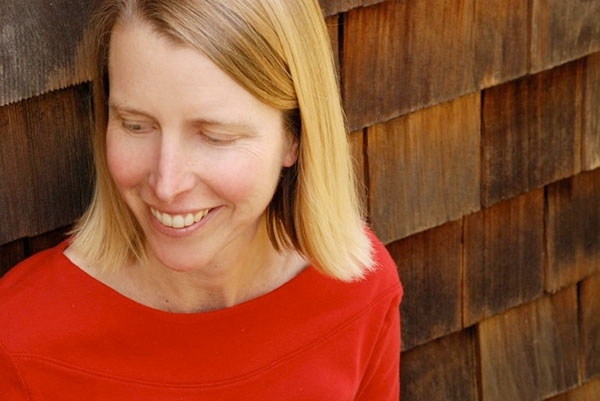
This October, Two Lines Press will release Baboon, the first book-length translation of Danish author Naja Marie Aidt. That story collection, Bavian, won the 2008 Nordic Council Literature Prize. “The Woman in the Bar,” a story from the collection, is available on WLT’s website as part of its Summer in Translation Reading Supplement. Here, WLT talks with the book’s translator, Denise Newman, about translating Aidt’s work as well as Denmark’s current literary scene.
Michelle Johnson: Scott Esposito of Two Lines Press said of this collection “that Aidt takes familiar ‘relationship’ stories and drives them into her own bizarre territory. Her stories start off seemingly normal and placid, but they very quickly begin to accelerate toward ‘demented.’” What would you add to his description?
DN: Aidt does sometimes push her characters to the extreme, but it’s always in order to reveal something particular about the contemporary human situation, which she has a tremendous insight into, just as Karen Blixen did for an earlier generation of Danes. I’d add that Aidt, who is also a poet (she has nine poetry collections), writes with great concision; her surfaces are spare, but the pressure she puts on her sentences gives a palpable feeling of the underlying emotional strain that the characters are undergoing. What’s unsaid is just as important as what’s being said, and the restraint requires more involvement on the reader’s part (to judge, decipher) and so in this way the reader becomes really involved in the stories.
MJ: Was it easy to retain this spare style in translation?
DN: Not always. Sometimes her short sentences sounded flat in English, and occasionally I had to combine sentences in order to keep the rhythm true to her style. I really admire Aidt’s economy of expression, and I found the need to use English just as succinctly to be both challenging and enormously engaging.
MJ: What was one of the thornier translation challenges in this project, and how did you resolve it?
DN: Naja and I went back and forth with certain epithets and obscenities (there are quite a few) trying to get the degree of emphasis and naturalness right. We got some help from her son who went to high school in Brooklyn. A more general challenge was finding the right voice for each narrator—for example, there’s a four-year-old girl, a depressed young man, a mother at the edge of her psychic strength—quite a range. I had to take time getting to know them, their situations and ways of seeing things, before I could find the correct tone.
MJ: Did you face any unique translation difficulties in “The Woman in the Bar”?
DN: The narrator of this story is an older woman who lived through the war, the creation of the GDR, and its dissolution. It helped to have visited Berlin before and after the wall came down to be able to appreciate how profound the changes would be in her life.[1] What was tricky about this narration was holding to the physical expression of what the protagonist is experiencing. The most dramatic piece of information is withheld from the reader, the protagonist knows, but it’s only revealed with one subtle sentence in the final paragraph.
MJ: Did you collaborate with Aidt while translating Bavian? What did this look like?
DN: We worked closely from the beginning. Naja has been living in the US with her family for several years, and her English is excellent. She had helpful suggestions for words that can’t be translated easily, like baked goods and slang expressions, and she was also able to elucidate sentences when I was a shade off. The stories went back and forth by e-mail, but she also visited me in San Francisco twice, and last summer in Copenhagen we went through the entire manuscript together. One afternoon, after working hard, we took a break and walked around the Botanical Garden where one of the stories takes place. As we wandered around, she told me how the idea for it came to her walking through with her young son on the way home from school. We visited several key locations, and I was able to find more precise translations of her descriptions of these parts. When I was a student at the University of Copenhagen in the 1980s, I used to cut through the garden on my way home, and so I thought I knew it well, but actually it had changed dramatically. It made me realize how valuable it is to visit sites as part of the translation process, even ones we think we know well, and ideally with the author.
MJ: Inger Christensen, whom you’ve translated, is considered to be Denmark’s greatest modernist author. Were you able to collaborate with her before her passing in 2009?
DN: I was fortunate to get to work with Inger on both novels. I visited her before and after The Painted Room was published in 2000. We had a long dinner to celebrate the publication and positive reviews. When I returned in 2008 to work with her on Azorno, she had moved to a smaller apartment, with seemingly even more books lining the walls and in stacks everywhere, and she patiently went through all my questions. At one point, when she was stumped by something, she leapt up to call her son who was living in Paris at the time, and they figured it out together. She seemed a little less robust than the last time I had seen her, but it was still a shock when she passed away a half year later.
MJ: How important is the time you’ve spent in Denmark to your ability to translate these Danish authors?
DN: It’s been crucial. I have a great affection and respect for Danes and Denmark, and this has made it easy to absorb the culture. It was important for me to experience firsthand what it’s like to live in a place where every citizen has access to the same standard of education, health care, time off (even from unemployment). Equally important was my physical experience of the place, the cities and countryside, its weather and light, and regional colloquialisms. I spent a lot of time on the Baltic island of Bornholm and got to know farmers, fishers, and ceramicists. All these things contribute to my understanding of the Danish sensibility, which, generally speaking, seems grounded in an honest assessment of things, and, since humor is a common way this gets expressed, it’s been helpful to have longtime friendships with Danes.
MJ: Have you ever translated an author from a place you’ve never dwelled in?
DN: No, I haven’t. Since translating for me is a way of engaging with another culture, it’s essential that I know it firsthand, and that I feel enough of a connection to it to want to dedicate myself to this type of intricate work.
MJ: In a recent interview of my good friend David Shook, his inquisitor asked him how his work as a translator influenced his work as a poet. David responded, “My work as a translator is my work as a poet, I think. I really don’t think of myself as working in two separate fields. At the end of the day, I consider myself a poet, and my translations reflect that.” You, too, both write poetry and translate others’ work. How do you see the relationship of these two acts?
I probably wouldn’t be translating if I weren’t a poet, and working with Danish has taught me a lot about English, for example, the casual violence in our figures of speech.
DN: They’re certainly enmeshed. I probably wouldn’t be translating if I weren’t a poet, and working with Danish has taught me a lot about English, for example, the casual violence in our figures of speech. Creating my own work, however, is different for at least two reasons. First, I never know if I’ll be able to complete what I’m writing, and this gives rise to all sorts of emotions, whereas with translation, all the ideas are there, I just have to create a structure in English for them—not that that’s easy, but without the emotional layer, the process is more straightforward. The other big difference is that I feel a tremendous responsibility to the text and author, but with my own writing, it has to be an entirely free space.
MJ: Can you recommend other Danish writers who have been translated into English?
DN: At the top of my list are the four poetry collections by Inger Christensen, Butterfly Valley, Light, Grass, and Letters in April, Alphabet, and It—all of them phenomenally translated by Susanna Nied and published by New Directions. I’d also recommend Henrik Nordbrandt’s When We Leave Each Other, tr. Patrick Phillips, and The Hangman’s Lament, tr. Thom Satterlee. The fiction writer Dorthe Nors has published her first book in the US, Karate Chop: Stories, tr. Martin Aitken, that’s getting a lot of well-deserved attention. Mette Moestrup will soon publish Kingsize, tr. Mark Kline, in the US, and I’m told it’s a must-read.
MJ: Who are the Danish writers not yet translated into English who most urgently should be?
DN: I think Søren Ulrik Thomsen’s books really should be made available. A few years ago there was a Selected Poems chapbook published by Poetry New York, tr. Susanna Nied, but it’s out of print now. Aidt’s poetry collections should certainly be published, and Nied has translated one of them, Everything Shimmers. Two prose writers that Aidt has recommended to me are Harald Voetmann and Christina Hesselholdt.
MJ: Can you tell us anything about the current literary and publishing climate of Denmark? Are writers and publishers there facing the same challenges writers and publishers face in the US?
DN: From my own experience and my contact with Naja, I see that there is still a tremendous amount of support for writers, translators, and publishers from the Danish government. This allows for more innovation and diversity when publishers aren’t pressed, as many are in the US, to put their resources into books that are guaranteed to sell well. This is especially significant for poetry. It also appears that books are more widely discussed in the mainstream media, and that writers have an equal part in the fabric of society. Such tangible and intangible support of literature has a big impact on the quality of life of writers, something I rarely hear discussed in the US.
MJ: Does the literary community in Denmark engage in the same debates that we see here in the US? For instance, is there discussion of parochial reading habits, a lack of women authors in translation, and how to increase the interest in and availability of literature in translation?
DN: Danes are avid readers of works in translation. Browsing through bookstores last summer, I saw that there is still a great interest in American, French, English, and German writers, but also books from Latin America, Asia, and the Middle East. In terms of Danish lit, women writers have a strong presence, and this is of course related to the fact there is equal access to excellent, affordable childcare, and a generous maternity leave. There are also many women critics and arts administrators, which also add to equal representation and support.
A big topic of discussion now in the press and within literary circles is about racism and white privilege, and this was prompted by a book of poems by the then eighteen-year-old Danish poet Yahya Hassan (his name is the book’s title), in which he writes candidly about growing up in a poor section of a Danish city, about his difficult home life, and the different ways he’s been affected by racism. The book sold 100,000 copies in the first three months, unheard of for a book of poetry in DK, and has sparked debates regarding racial inequities in Denmark. I imagine these will be important issues in Danish lit for some time as the society becomes more and more diverse.
Denise Newman is a translator and a poet who has published three collections of poetry. She has translated two books by Denmark’s greatest modernist author, Inger Christensen, and her work has appeared widely, including in Denver Quarterly, Volt, Fence, New American Writing, and ZYZZYVA.
[1] Editorial note: WLT’s November 2014 issue will include a special section on central European literature twenty-five years after the fall of the Berlin wall, including poetry by Durs Grünbein and Julia Fiedorczuk, an interview with Tomas Venclova, an essay on post-Wende German literature, and more.
